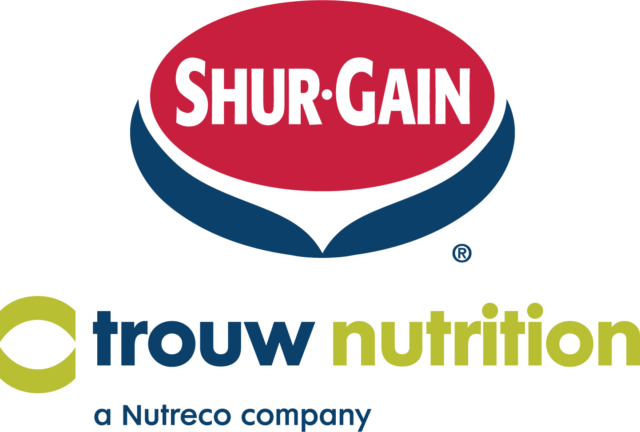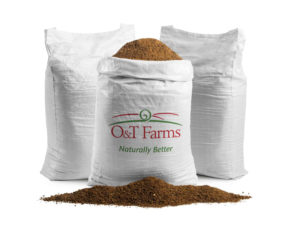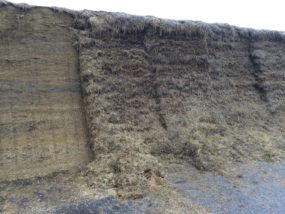Managing cows correctly during the transition period is one of the most important factors for overall farm success. During the transition period, nutrient requirements change to support fetal growth, colostrogenesis and the onset of lactation following parturition. Dairy cows are at greatest risk of developing diseases leading to involuntary culling during this time. Monitoring the transition dairy cow is important to get ahead of bottlenecks that may impact performance. A high-performing lactation takes preparation; thus, it is essential to provide the best conditions to cows during the transition period.
Transition diseases in dairy cattle are highly correlated and a strategy focusing on preventing two of the main diseases – ketosis and hypocalcemia, whether clinical or subclinical – can help with mitigation of other transition diseases as well. These two diseases directly affect the reproduction, productivity and longevity of cows in the herd.
Understanding the longevity of cows in the herd and the lactation distribution of your herd is a key part of designing transition program strategies. In Figure 1, looking at a variety of herds across Canada, the percentage of animals in the third-plus lactation is 42%, falling short of the benchmark set by the top herds of 55%. From an economic perspective, in those same herds, the mature cows in the third-plus lactation generate an additional $2,100 of milk revenue per lactation. That additional revenue justifies investigating further what longevity looks like across herds for those mature cows.

Figure 2 illustrates a snapshot of two subsets of herds, one subset that has actively focused on improving longevity via investment in transition nutrition and another that puts less focus on transition nutrition. The top subset of herds not only has greater longevity with a greater distribution of mature cows above three lactations, but their mature cows also hold their production through the sixth lactation, far outperforming the younger cows. Looking at the bottom subset of herds, they have far fewer animals above second lactation, and their mature cow production is much less consistent, pointing to struggles with transitioning cows from one lactation to the next, ultimately impacting lifetime production.

If the goal is to improve profitability, the focus needs to be on transition. However, before fine-tuning transition nutrition programs to minimize the risk of ketosis or hypocalcemia, the basics around environment and management need to be met first to ensure the success of any nutrition interventions.
Ketosis
Ketosis occurs during the onset of lactation when the calories the cow is consuming are not able to meet the energy demands of her rapidly increasing milk production, and thus, she meets her energy demands by mobilizing body fat. As the cow enters this negative energy balance, the liver must then oxidize the mobilized body fat or nonesterified fatty acids (NEFAs) into very-low-density lipoproteins (VLDL) to transport the fat out of the liver as well as esterifying the NEFAs into ketones, such as beta-hydroxybutyrate (BHB). VLDL can be used for milk fatty-acid production, and BHB can be used as an energy source, thus the cow is able to mitigate the gap in energy needed for milk production versus the energy she consumes with her own body. This process is normal and is only an issue when the mobilization of body fat becomes too great, and as a result, the liver becomes overloaded and can’t keep up with excess body fat mobilization.
BHBs can be measured as a blood marker of the level of ketosis in individual cows or on a herd level, with over 1.2 millimoles per liter indicating subclinical ketosis and over 3.0 millimoles per liter indicating clinical ketosis.
The prevalence of ketosis across herds is around 20% for subclinical ketosis and 10% for clinical ketosis. This results in lowered production by up to 2 kilograms per day in the first 30 days of lactation; an additional 16-22 days open; greatly increased risk for other transition diseases; and results in cows being far more likely to be culled and not reach high levels of lifetime production.
Excess body condition scores (BCS) of over 3.5 BCS, days dry over 72, an age at first calving of over 25 months, and calving intervals over 15 months all greatly increase the risk of ketosis. As ketosis is often called a dry matter intake (DMI) disease, anything that hampers consistent intake, such as feeding every other day, infrequent pushups, feeding to a slick bunk and overcrowding, can all increase the risk of ketosis as well.
There are many nutritional technologies that can lessen the risk of ketosis in a dairy herd. Taking a multi-pronged approach to support the cow both from a liver health standpoint and from a glucose metabolism standpoint is an excellent strategy:
- Rumen-protected methyl donors impact liver health by playing a key role in increasing the production of VLDL, which decreases the risk of fat accumulation in the liver that may occur when excess body condition is mobilized. They also assist in liver metabolism and increase glycogen stores in the liver.
- Nutritional technologies that impact insulin sensitivity, and thus improve glucose absorption, impact negative energy balance. If the cow is more primed to utilize glucose as an energy source, the need for mobilized body fat as an energy source is lessened, and the risk for ketosis is minimized.
Hypocalcemia
Hypocalcemia, better known as milk fever, occurs at the onset of lactation when the demand for calcium increases by over 400% due to the demands of milk production. Calcium is an essential nutrient required for a variety of functions including milk production, muscle contractions, bone structure, nerve conduction, immune function and blood clotting.
Clinical hypocalcemia occurs at a blood level under 5.5 milligrams per deciliter, typically impacts less than 5% of cows and has a cost of up to $400 per case in terms of treatment cost and lost milk production. Subclinical hypocalcemia occurs when blood calcium is under 8.5 milligrams per deciliter but above 5.5 milligrams per deciliter and doesn’t exhibit clinical signs. Although the cost per case is less – under $200 – the impact is greater, as over 60% of cows experience it. In addition to the cost of hypocalcemia, the likelihood of other transition diseases increases exponentially.
Hypocalcemia occurs simply because at the onset of lactation, calcium homeostasis in the cow is stressed by the sudden increase in demand, and the calcium that the cow is consuming, along with the mobilization of calcium from bone, is not able to meet the cow's needs until her DMI levels recover from the drop around parturition.
Over the years, many nutritional strategies have been utilized to combat the risk of clinical hypocalcemia with varying levels of success. However, there are only two main strategies that can impact both clinical and subclinical hypocalcemia:
- Negative dietary cation-anion difference (-DCAD) programs work by increasing the level of anions (chlorine and sulphur) relative to the cations (sodium and potassium) in the diet. When this happens, the anions trigger metabolic acidosis with the release of hydrogen in the blood. This brings down the pH of the blood slightly, and as blood pH is tightly regulated, the cow responds by transferring the acidity to the kidneys, where it is excreted in urine. Low urine pH stimulates the parathyroid gland to release parathyroid hormone (PTH) which, along with vitamin D, stimulates the release of calcium from bone (and increased dietary calcium absorption by gut tissues), resulting in enough blood calcium to prevent hypocalcemia.
- Binding programs work by tying up phosphorus, which results in lower blood phosphorus, and the subsequent mobilization of phosphorus from bone. Since phosphorus and calcium are bound together in bone, as phosphorus is mobilized, calcium is also mobilized/released. Additionally, there is evidence that binders increase the active form of vitamin D in the blood, which further helps with calcium mobilization. Together, these modes of action help limit hypocalcemia.
Bottom line
Managing dairy cows effectively during the transition period is crucial for farm success. The risk of diseases such as ketosis and hypocalcemia is highest during this time, and their prevention is key to maintaining cow health, productivity and longevity. Understanding the herd’s lactation distribution is essential for designing effective transition strategies. Economic benefits are evident in herds with higher percentages of mature cows, as they generate significantly more milk revenue.
Ensuring optimal cow comfort and management practices lays the foundation for successful transition periods. Investing in nutritional technologies to mitigate ketosis and hypocalcemia can yield high returns. Strategies such as rumen-protected methyl donors and nutritional technologies that enhance insulin sensitivity can help manage ketosis, while -DCAD and binding programs can effectively prevent hypocalcemia.
By focusing on these comprehensive management and nutritional strategies, dairy farmers can improve the health and productivity of their herds, ultimately enhancing farm profitability and sustainability.










